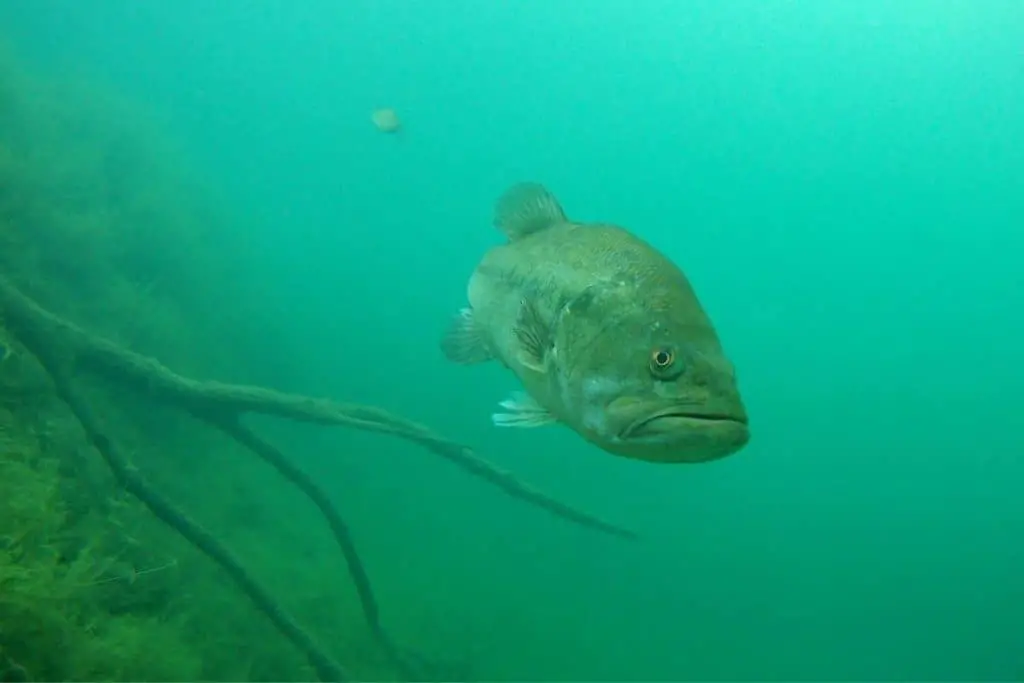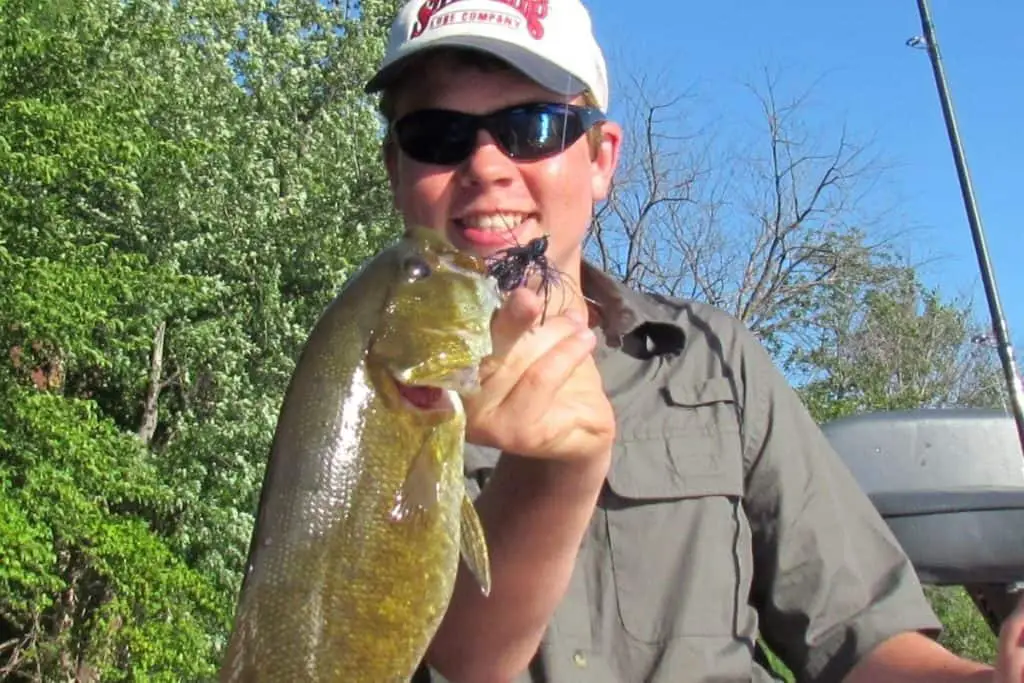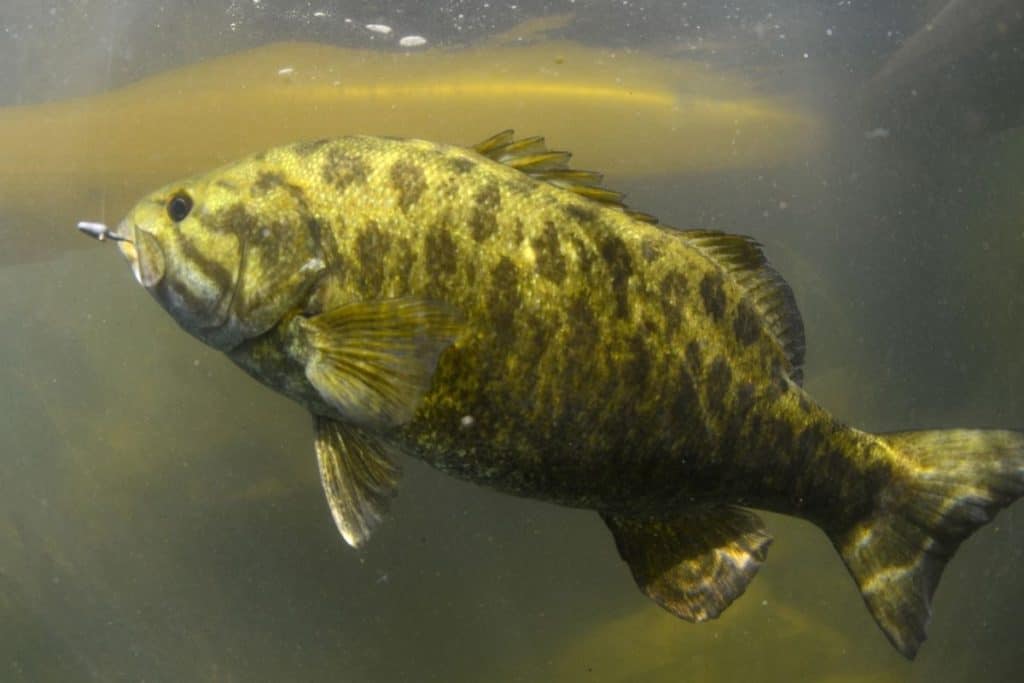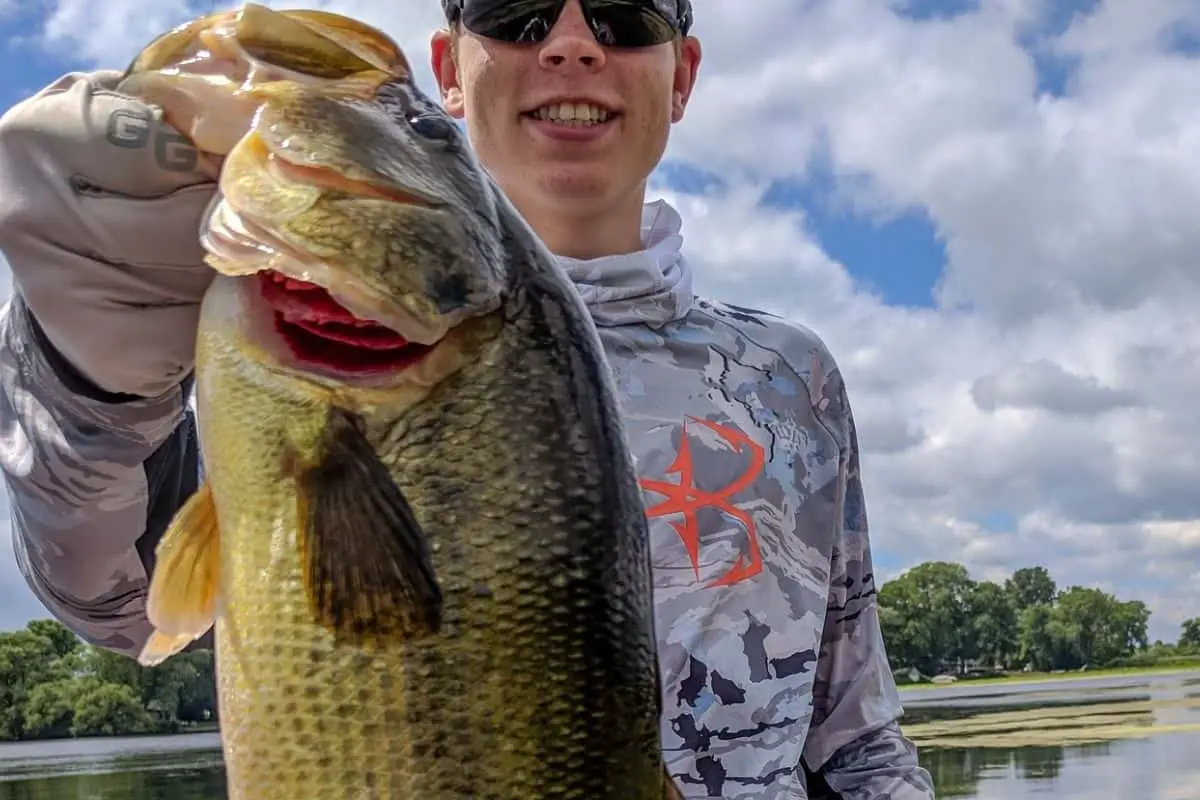Many creatures in the wild change their colors. This is to conceal themselves within the environment they live in.
Bass have a variety of color patterns anglers may see. Clear water bass have more defined patterns and contrasting colors. Muddy water bass have a muted color pattern that almost appears white or gray.
The reason a bass will have distinct colorations is in direct response to the amount of light in the water. The bass in the above image is extreme in its use of greens. It was caught in thick vegetation.
The Biology Behind Color Change in Bass
The pigmentation in the skin of bass will either move closer to the surface or farther away based on light reception.
This light reception is picked up by the eyes of the bass. It is also in direct correlation with water clarity. Clearer water allows for more light penetration. Dirty water restricts how far the light reaches.
When the light in the water is abundant, the pigment of the bass moves closer to the surface. This makes for more pronounced color patterns and lateral lines.
When there is little light penetration, the pigmentation moves farther from the skin’s surface resulting in a more muted pattern. Some bass that live in real dirty water will have a lateral line that is hard to pick out.
In reality, the bass are not changing color as much as they are displaying a more defined or muted color pattern.

How Bass Anglers Can Use This Information
There are times when anglers will catch bass with a coloration that doesn’t make sense with where they were caught.
This most often happens in clear water or lakes and rivers with a slight stain to it.
Here are a couple of examples:
- If an angler catches a bass that is very dull in color while fishing shallow, that tells the angler that the bass are moving up from deep water.
- The opposite is also true. When a bass is caught in deep water that has a defined color pattern, it tells the angler the fish are starting to move away from the shallows.
This information can be valuable when deciphering what is happening. This is common in the spring as fish are starting to position themselves for the upcoming spawn.
When prespawn fish that are staging offshore suddenly move shallow, they are often muted in color for a short time. This tells anglers that a wave of fish may be in transition.

Smallmouth Bass Have Vivid Patterns in the Right Conditions
It is amazing how defined and bright the patterns of a smallmouth bass can be.
When fishing for these amazing fighters in really clear water, the pigmentation is vivid. Smallmouth also really sport their patterns when in the livewell for a short time. This is often seen in tournaments. The fish that are brought to the scales are gorgeous.

Good luck out there and make sure to encourage someone today. You never know how you may change their life forever.
Isaiah 6:8

